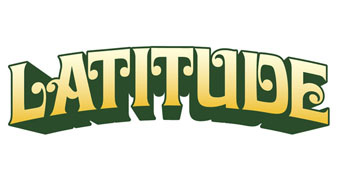NILS LOFGREN
Songwriter, guitarist and member of Crazy Horse and Springsteen’s E Street Band. Played on After The Goldrush aged 17.
***
When we first got out to LA in early ’68, my band Grin became the house band at [Topanga Canyon club] The Corral. It was a great hangout and Neil later came down to jam with us occasionally. I moved into [Young producer] David Briggs’ home at that point in my life, so Topanga became my neighbourhood. It was a fabulous, vibrant community of hippies and hard-charging musical transplants, all based around The Corral. Taj Mahal would play three or four sets, free of charge, every Monday night. David Briggs and his cronies would chase away all the Valley people who tried to sneak in. Sometimes it would get quite physical. It was a great, territorial, protective enclave of a community. It was a really great time to be out there at that time in your life. Neil came down one night to sit in with Grin. We were a trio at that time, so it was great to have that additional guitar there.
Initially Neil and David Briggs were going to produce the first Grin record together. But Neil got so wrapped up in Crosby, Stills & Nash and his solo career that even David said “It’d be great to have Neil but he’s too busy, so let’s move forward.” In the spirit of who Neil is, even though Grin had quite a few songs and Neil had heard them, we did some blues things at The Corral too, so he could stretch out on guitar. It was just a fabulous night and I certainly regret not having a portable video at the time. The very next day, David threw me in a car and said “let’s go up and see Neil.” So we got to his house and all of a sudden, David and Neil ganged up on me, told me they had some bad news. I got all upset, then they said “Look man, your band’s great, you’ve got great songs, but you’ve gotta fire your bass player.” I was just a kid and this was a real showbiz eye-opener. Neil and David were very kind but firm with lessons to me. I’d thrown my hat in the ring, but one of the most beautiful things about working with Neil and David was the bluntness and honesty. Once I’d got over the horror of it, that advice served me well.
[On first meeting Neil Young & Crazy Horse at the Cellar Door in Washington, DC in May 1969] I was always hanging out with people a few years older than me, but when I first met Neil he’d already made some beautiful records with The Buffalo Springfield and solo. I was impressed with the fact he let me sing some songs for him. Fortunately the first Grin record was already written, so I sang half of it and Neil liked it. Then he bought me a cheeseburger and a Coke, because I was underage. Then I watched four shows at the Cellar Door over two nights, after which he invited me to the hotel out in Virginia across the river, to hang out in the afternoon. And once he and Crazy Horse left town, Neil actually called me from the road a couple of times, to give me some counsel about some of the silly, bad deals we were in. We’d already booked ourselves on a flight to LA and Neil told me to look up he and David once I got there. To cut to the chase, they were true to their word. To this day, Neil remains one of my true inspirations and mentors.
[On being called up for After The Goldrush] When I left home to try my luck as a musician, everybody, including my best friends, thought I was throwing my life away. I quickly got into the business of taking chances. So after I’d been living in LA for a year, to hear from Neil Young (which was like looking at a big brother or cousin, with a kind of awe), I said yes, of course. Then to my horror he said he might want me to mostly play piano. I felt like I owed him the honest truth, which was that I wasn’t a piano player. After I told him, he and David [Briggs] were very matter-of-fact about it. Neil said “Look, you’ve been playing classical accordion since you were six. Y’know, a piano’s like an accordion, you’ll figure it out. We just need some time practice.” So David Briggs arranged for John Locke, who lived nearby in Topanga and was the fabulous keyboard player in Spirit, to leave his patio door unlocked, where he had a funky old upright piano.
Literally 24 hours a day, I was welcome to go there. So I’d go over there and practice the songs on his old piano when I wasn’t actually at Neil’s house working on the record. In retrospect, I guess what Neil got was someone with a good sense of rhythm and melody who was playing an instrument so unfamiliar that at my most creative, I was writing incredibly simple, rhythmic, solid parts. So you had Ralphy Molina and me doing these very simple, deep-groove parts in the middle with a very brilliant, colourful bassist in Greg Reeves underneath. It was deep-pocket bass, but with more colour and movement than most bass players could muster. Then you had Neil on top with his melodies and guitar. And it was just something that worked as a four-piece, a very simple, fresh sound.
It was all fairly loose. There were a couple of songs Neil wanted me to play acoustic guitar on. I didn’t own one, so he lent me the [Martin] D-18, which eventually became a gift from him and which I’ve used on my latest record, The Loner [a set of Neil Young covers]. It wasn’t like I was a virtuoso at all. At my most creative I was still playing very simple, rhythmic parts. Unless there was a function of following a theme or a lick here and there, I was left to my own devices to come up with some simple ideas that worked. On the song “Southern Man”, it was lunch break and Ralphy Molina and I stayed in the studio to jam. If you notice, “Southern Man” is in very slow, half time. After jamming that way for half an hour or so, I got a little bored and started doing the accordion beat to it and we double-timed it. When Neil came back from lunch, he loved the feel and said “What’s that?” I said “Well, that’s an accordion beat to ‘Southern Man’.” So he said “Right, then that’ll be the solo in the end.” And if you notice in the finished song, when we hit the solo and then at the end, the whole groove changes and we go to double time. So thanks to my accordion days, I accidentally came up with a useful arrangement. It was a wonderful experience for me as a kid.
Recording After The Goldrush was very idyllic. We recorded up on a high bluff, way up in the hills overlooking the whole Topanga Canyon valley. It was beautiful, the weather was beautiful and there was an outside patio on the porch above where we were playing. We’d hang out there and enjoy the beautiful nature scene. And Neil kept it that way. We’d play a little bit, then go up top and hang out. It was all very laid back. Topanga was this great cross-section of hippies and flower people, but with some really rough-n-tumble cowboy-type attitudes. David Briggs, for example, was from Wyoming and was working on oil rigs when he was thirteen. There were some very tough guys who had migrated there and there was also this macho music scene going on at The Corral. There’d be camaraderie and also a fight or two. It was just a great combination of a lot of different elements there.
There’s a kind of haunted passion to what Neil does. He’s able to get that darkness he sometimes feels into his writing, but also with a sense of vulnerability and innocence, especially in his voice. He’s got it all, man. I played guitar on “Till The Morning Comes”, but the big piece was “Tell Me Why”, which was just me and Neil sitting across from each other. We played live and there was some fingerpicking I started doing. It was one of my first acoustic guitar sessions and singing live, sitting right across from Neil, I noticed a similar, haunted innocence to our voices. It had that gentle vibe I knew would serve me well singing that song. We have similar qualities in that respect.
I was excited because Neil seemed to be very happy with what he thought was a fresh, new sound. He seemed to be really engaged by that. I have to admit I was so petrified during initial playback that I was focusing, tunnel vision, on my piano parts and trying to see if there was anything I could alter once I started hearing what Neil and Greg Reeves were doing.
One of my favourite tracks for After The Goldrush was a song called “Wonderin’”, which never made the record. But I believe the tape of us doing that song is going to be on Archives. I fell in love with that song and to this day, I wish it had ended up on the finished record. I got to play this honky-tonk piano and then did some harmonies afterwards. Maybe it didn’t make it because it was too much of a happy, fun-loving song, I don’t know. There may have been a lightness and a lilt to it that Neil felt was better suited to another project. My buddy Joel Bernstein told me there was a good chance it would be on Archives.
Neil has always just done what musically engages and inspires him. And because he’s so multi-talented, I think that when he made Harvest he was truly engaged and inspired. He got into Nashville and had some songs written that fitted into that configuration. I don’t think his plan was to have a giant hit record. I think it was about making a beautiful, emotional record that he was into. I also know that, like any other human being, the fact that he made a record he was proud of emotionally and which turned into a massive hit gave him a gigantic financial freedom. Then he realised he had more freedom to do some exploring. Neil is the kind of guy who would have done it no matter what, but I’m sure it wasn’t lost on him. All of a sudden he had this giant hit record. I don’t think he’s ever felt pressured to do what a record company wants. Neil’s only pressure is waiting for the muse to inspire him towards the next big thing.
There are two classic main things about Neil. There’s his massive gift for songwriting and musicianship, combined with passion. When you get passion into that mix you get something extraordinary, that’s what makes him excel at what he does.
INTERVIEW: ROB HUGHES



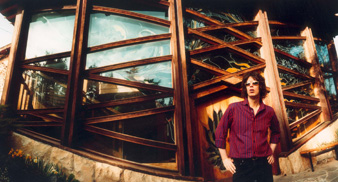
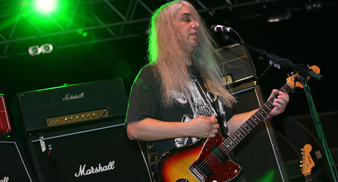
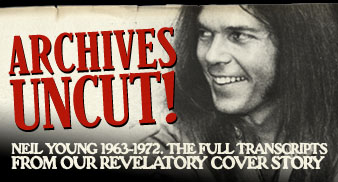
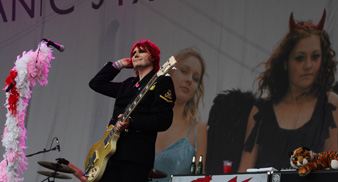


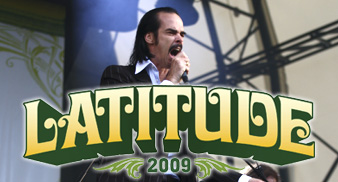
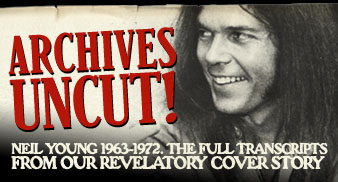
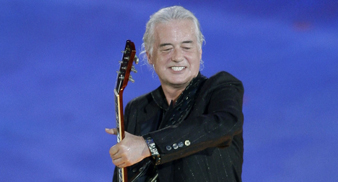
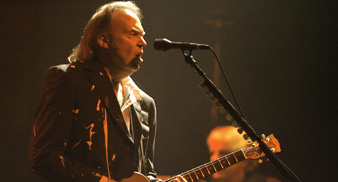
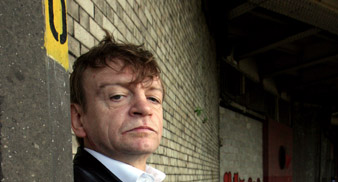
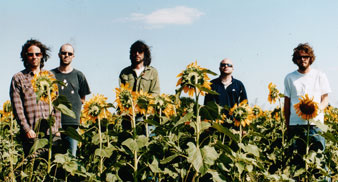
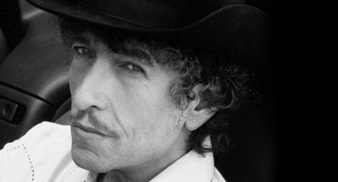
 This year's Latitude 2009 is being launched today (March 23), with the first headliners for the event's fourth year being announced at 7pm.
This year's Latitude 2009 is being launched today (March 23), with the first headliners for the event's fourth year being announced at 7pm.
 Franz Ferdinand, Sigur Ros, Interpol headlined the Obelisk main stage at the three-day Suffolk festival last Summer, whilst Blondie, Martha Wainwright and the House of Love all played at the Uncut Arena.
Grinderman, Elbow and Joanna Newsom were also some of our highlights last year.
Franz Ferdinand, Sigur Ros, Interpol headlined the Obelisk main stage at the three-day Suffolk festival last Summer, whilst Blondie, Martha Wainwright and the House of Love all played at the Uncut Arena.
Grinderman, Elbow and Joanna Newsom were also some of our highlights last year.
 Uncut will once again be hosting the second stage, all details will be revealed this evening at 7pm, so check back to
Uncut will once again be hosting the second stage, all details will be revealed this evening at 7pm, so check back to 